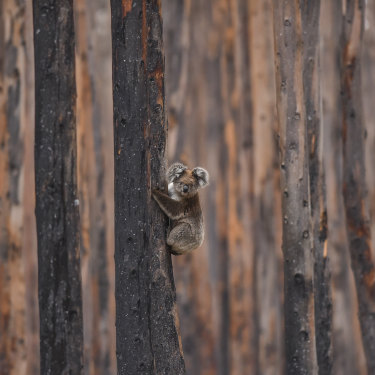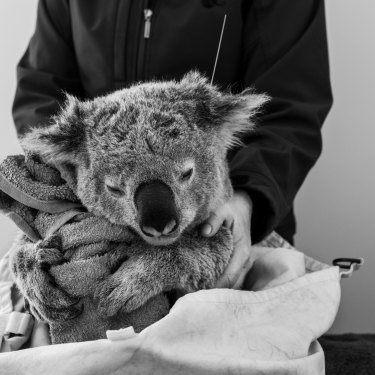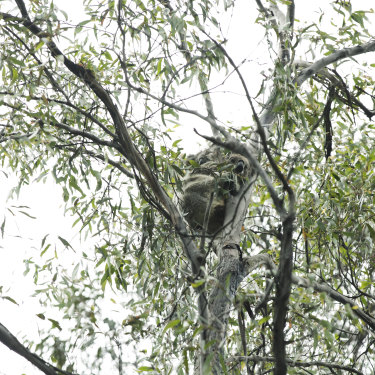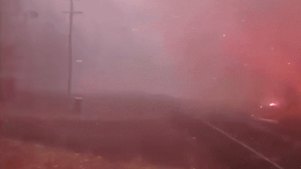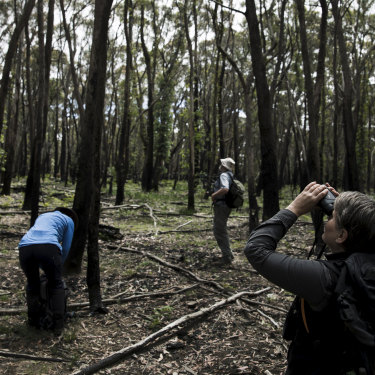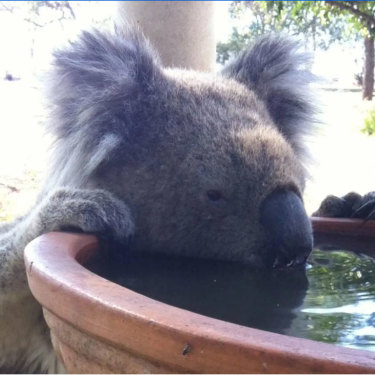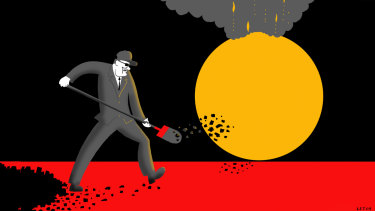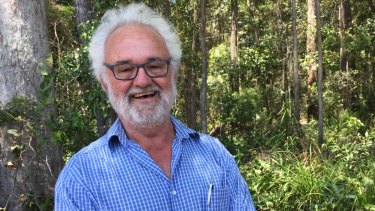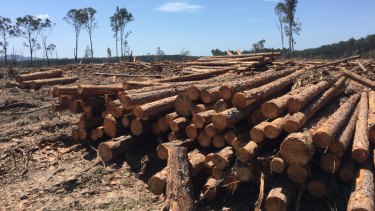Drax!
It sounds like a villain in The Avengers series.
We first saw it when visiting my niece in Yorkshire a few years back. But we did not know then that this huge, redundant coal-fired power station outside the historic town of Selby had been re-purposed as Britain’s largest biomass plant. But now, it seems, everybody is talking about it.
Drax has been touted as a pioneer of clean, green, renewable, carbon-neutral and sustainable power, and is one of villains of the documentary BURNED: Are Trees the New Coal?, an excellent but scary film made by North Carolina’s Dogwood Alliance about the burning of wood on an industrial scale for energy. It tells the little-known story of the accelerating destruction of forests for fuel, probing the policy loopholes, huge subsidies, and blatant green-washing of the burgeoning biomass power industry.

BURNED describes how the European Union’s desperation to reduce carbon emissions and dependence on fossil fuels kicked off a demand for wood pellets for burning to generate electricity that in turn created an industry. Promising clean, green, renewable, carbon-neutral and sustainable power, it came for what it called forest waste, and then it came for the forest itself.
The film exposes a green-wash built on shonky accounting and corporate conjuring, corporate deception and misrepresentation, complicit economists and regulators, and semantic sleight of hand.
It reveals how an accounting error determined biomass burning to be carbon neutral, whilst a mechanism to prevent counting carbon twice became a rule that carbon wasn’t counted at all. Indeed, it was declared that the burning of biomass was “instant carbon sequestration” whilst emissions exuding from the new-age power stations were actually “biogenic carbon” – green power!
And it exposes the hoodwinking of ordinary folk in economically depressed areas who now suffer the environmental and health consequences of born-again power plants that become, in reality, incinerators.
PLEASE WATCH THIS IMPORTANT FILM NOW — free-streaming via LinkTV (30-minute concise edition) HERE
Coming to a forest near you!
In Australia and elsewhere, the general public, forest industry nostalgists, conservative politicians, and, even, many environmentalists believe that we are saving forests from destruction by using plantations for jobs and construction timber, when in fact the former are few, supplanted by hi-tech mechanization, and latter is destined for pulp mills and power plants.
But maybe we are at last wising up.
Since the widespread distribution of BURNED, the true scale of the biofuel greenwash is being given the publicity it needs. The true colours of rebadged, born-again plants like Drax are now revealed for all the world to see. And they are not green!
The mainstream media is now on the case, as demonstrated by recent pieces in The Australian and The New Yorker. The latter, an informative report reporting on work done by the Dogwood Alliance and the Southern Environmental Law Centre, is republished in full below (But you can read it HERE).
Drax, of course, is held up as public enemy number one.
The Southern Environmental Law Centre reports that the British government, “continues to heavily subsidize biomass electricity generation at the expense of wind and solar. In 2018 alone, Drax Power (which has now converted four of its coal-fired plants to burn biomass) received £789.2 million in U.K. government subsidies under the guise of carbon reductions … These subsidies are being used on an industry that, even under the proclaimed best case scenario, does not reduce carbon emissions in the time-frame necessary for avoiding the worst impacts of climate change. Instead, the UK and European Union must end all subsidies for biomass electricity generation and reallocate existing biomass subsidies to zero-emitting renewables like wind and solar”.
It gets worse. Like some colonizing power (no pun intended), Drax is extending its reach. The SELC reported recently on a carbon lifecycle analysis for three wood pellet mills located in Louisiana and Mississippi and owned by Drax Biomass, a subsidiary of Drax Power … The analysis demonstrated that Drax’s plants rely mostly on whole trees sourced from thinnings from non-industrial pine plantations, with the remaining wood coming from sawmill residues, although there is evidence that Drax is using between 5-20 % hardwoods. Rather than reducing carbon emissions, the analysis showed that burning wood pellets from these mills for electricity in the U.K. increases carbon pollution to the atmosphere for more than 40 years”.
Meanwhile, as I write, back in Europe, a cargo ship is approaching Ireland’s green shores laden with timber from faraway foreign forests to be consumed in re-engineered peat-fired plants as part of a “co-fuel” trial. The Irish environmental organisation An Taisce (pronounced An Taysh) – essentially, the country’s national trust – has sounded a clarion call with respect to shipping what is officially designated “sustainably sourced biomass” (of course it is!) in a diesel-powered vessel halfway across the world from a country that is already facing dire environmental problems – and no, we’re not talking about some impoverished third world nation, but economically, technologically, intellectually and socially well-to-do Australia!
Australians too are now on the case.
In a recent article, environmentalist Francis Pike shone a strong light on Australia’s disingenuous complicity in what is indisputably a global greenwash. She writes: “the fairy-tale that burning wood instead of coal is carbon neutral continues to wreak havoc on the world’s extant forests … For a long time, the falsity of carbon emission accounting for forest bio-energy has been apparently invisible to many policymakers”. But, she continues, “the fairy-tale could soon end, taking with it the myth that the industrial logging of the world’s native forests has been and is now “sustainable”.
She, like the Dogwood Alliance, calls out the linguistic contortions and the dubious accounting: “Corporatised state forest agencies and helpful state environmental protection agencies have created industry-friendly definitions, definitions of residue that can accommodate whole logs. They might be called pulp logs – native forest trees of various “unwanted” species not allowed to grow to maturity”.
And whilst we in northern New South Wales might be alarmed about re-tooled plants like Drax and those in Ireland’s Midlands, Pike reminds us that something wicked this way comes: “ … whole log “residues” can be chipped and transported to power stations or transported and then chipped at the power station, as with New South Wales power stations at Vales Point on the Central Coast and Cape Byron in the north. Native forest biomass burnt with or without coal or something else, props up emission intensive enterprises with its “carbon neutral, renewable energy, subsidy attracting” quality. Or the forest biomass is exported, as pellets, chip or whole trees”. (Activists are already protesting at the Condong plant at Cape Byron).

‘Renewable energy’ at Cape Byron, NSW
Australian forests are now being actively marketed as an export commodity for combustion in Asia, most notably China, and to a lesser extent, Japan – not to mention, of course, Saint Patrick’s Fair Isle.
Queensland Commodity Exports Pty, Ltd, a subsidiary of wood-chip behemoth Midway, a leading supplier of wood-fibre to the Asian markets, is currently sourcing Forest Stewardship Certification (FSC) certified timber (a much-prized but highly suspect ‘green tick of approval’) from northern NSW – including all of Bellingen’s plantation forests, and pulping it on the wharf at Port Brisbane.
So …
BELLINGEN BEWARE — vast areas of our closely surrounding public forests have been reclassified as ‘low quality’ for wood-chip export … the bio-fuel industry will be coming for us next!
As Bob Dylan once sang, “It’s all just a dream, babe, a vacuum, a scheme, babe, that sucks you into feelin’ like this”.
Here is some further the reading on Drax and the Irish trials:
See also in In That Howling Infinite, The Return of the Forest Wars and If You go down to the woods today.

Condong 13/08/2019. David Bradbury
The bonfire of insanity: Woodland shipped 3,800 miles to burn in Drax, emitting more CO2 for a cleaner and greener Britain!
David Rose, The Mail on Sunday, 16th March 2014
On a perfect spring day in the coastal forest of North Carolina I hike along a nature trail – a thread of dry gravel between the pools of the Roanoke river backwaters. A glistening otter dives for lunch just a few feet away.
Majestic trees soar straight and tall, their roots sunk deep in the swampland: maples, sweetgums and several kinds of oak. A pileated woodpecker – the world’s largest species, with a wingspan of almost 2ft – whistles as it flutters across the canopy. There the leaves are starting to bud, 100ft above the ground. The trees seem to stretch to the horizon: a serene and timeless landscape.
But North Carolina’s ‘bottomland’ forest is being cut down in swathes, and much of it pulped and turned into wood pellets – so Britain can keep its lights on.
The UK is committed by law to a radical shift to renewable energy. By 2020, the proportion of Britain’s electricity generated from ‘renewable’ sources is supposed to almost triple to 30 per cent, with more than a third of that from what is called ‘biomass’.
So our biggest power station, the leviathan Drax plant near Selby in North Yorkshire, is switching from dirty, non-renewable coal. Biomass is far more expensive, but the consumer helps the process by paying subsidies via levies on energy bills.
That’s where North Carolina’s forests come in. They are being reduced to pellets in a gargantuan pulping process at local factories, then shipped across the Atlantic from a purpose-built dock at Chesapeake Port, just across the state line in Virginia.

From the States to Selby
Those pellets are burnt by the billion at Drax. Each year, says Drax’s head of environment, Nigel Burdett, Drax buys more than a million metric tons of pellets from US firm Enviva, around two thirds of its total output. Most of them come not from fast-growing pine, but mixed, deciduous hardwood.
Drax and Enviva insist this practice is ‘sustainable’. But though it is entirely driven by the desire to curb greenhouse gas emissions, a broad alliance of US and international environmentalists argue it is increasing, not reducing them.
In fact, Burdett admits, Drax’s wood-fuelled furnaces actually produce three per cent more carbon dioxide (CO2) than coal – and well over twice as much as gas: 870g per megawatt hour (MW/hr) is belched out by wood, compared to just 400g for gas.
Then there’s the extra CO2 produced by manufacturing the pellets and transporting them 3,800 miles. According to Burdett, when all that is taken into account, using biomass for generating power produces 20 per cent more greenhouse gas emissions than coal.
And meanwhile, say the environmentalists, the forest’s precious wildlife habitat is being placed in jeopardy.
Drax concedes that ‘when biomass is burned, carbon dioxide is released into the atmosphere’. Its defence is that trees – unlike coal or gas – are renewable because they can grow again, and that when they do, they will neutralise the carbon in the atmosphere by ‘breathing’ it in – or in technical parlance, ‘sequestering’ it.
So Drax claims that burning wood ‘significantly reduces greenhouse gas emissions compared with coal-fired generation’ – by as much, Burdett says, as 80 per cent.
These claims are questionable. For one thing, some trees in the ‘bottomland’ woods can take more than 100 years to regrow. But for Drax, this argument has proven beneficial and lucrative.
Only a few years ago, as a coal-only plant, Drax was Europe’s largest greenhouse gas emitter, and was often targeted by green activists. Now it boasts of its ‘environmental leadership position’, saying it is the biggest renewable energy plant in the world.
It also gets guaranteed profits from the Government’s green energy subsidies. Last year, these amounted to £62.5 million, paid by levies on consumers’ bills. This is set to triple by 2016 as Drax increases its biomass capacity.
In the longer term, the Government has decreed that customers will pay £105 per MW/hr for Drax’s biomass electricity – £10 more than for onshore wind energy, and £15 more than for power from the controversial new nuclear plant to be built at Hinkley Point in Somerset. The current ‘normal’ market electricity price is just £50 per MW/hr.
Mr Burdett admitted: ‘Our whole business case is built on subsidy, like the rest of the renewable energy industry. We are simply responding to Government policy.’
Company spokesman Matt Willey added: ‘We’re a power company. We’ve been told to take coal out of the equation. What would you have us do – build a dirty great windfarm?’
Meanwhile, there are other costs, less easily quantifiable.
‘These are some of our most valuable forests,’ said my trail companion, Derb Carter, director of the Southern Environmental Law Centre in Chapel Hill, North Carolina. ‘Your government’s Department for Energy and Climate Change claims what’s happening is sustainable, and carbon neutral. But it’s not. What you’re actually doing is wrecking the environment in the name of saving the planet.
After our hike through the forest, Mr Carter and I drove to a nearby airfield, where we boarded a plane. From 2,000ft up, the forest spread beneath us. Soon, however, we reached an oblong wedge, an open wound in the landscape. It was a recent ‘clear cut’ where every tree had been removed, leaving only mud, water and a few stumps. Clear cuts are the standard means of harvesting these forests, and this one covered about 35 acres.
Enviva yesterday confirmed that some of its wood was turned into pellets for Drax.
In the next 10 minutes, we flew over at least a dozen such holes in the tree cover. Finally a looming smokestack appeared up ahead: Enviva’s pellet plant at Ahoskie. To one side lay the material that provides the plant’s input: a huge, circular pile of logs: tens of thousands of them, each perhaps 30 or 40ft long. In the middle was a heavy-duty crane. It swivelled round and grabbed bunches of the logs as if they were matchsticks, to feed them into the plant’s machines. Later, we inspected the plant on the ground. It’s clear that many of the logs are not branches, but trunks: as Carter observed, they displayed the distinctive flaring which swampland trees often have at their base.
Here the story becomes murky. At Drax, Burdett said that in making pellets, Enviva used only ‘thinnings, branches, bentwood . . . we are left with the rubbish, the residue from existing forestry operations. It’s a waste or by-products industry.’ He insisted: ‘We don’t actually chop whole trees down.’ But looking at the plant at Ahoskie, Carter said: I just don’t get this claim that Drax doesn’t use whole trees. Most of what you’re seeing here is whole trees.’
Pressed by The Mail on Sunday, Enviva yesterday admitted it does use whole trees in its pellet process. But according to spokeswoman Elizabeth Woodworth, it only pulps those deemed ‘unsuitable for saw-milling because of small size, disease or other defects’.
Not so green: By using pellets, Drax produce three per cent more carbon dioxide than coal, not including the CO2 produced by manufacturing the pellets and transporting them 3,800 miles
She claimed such trees, no more than 26 inches in diameter, make up a quarter of the wood processed at Ahoskie. Another 35 per cent comes from limbs and the top parts of trunks whose lower sections went to saw mills. To put it another way: 60 per cent of the wood cut by the loggers who supply Enviva is turned into pellets.
The firm, she added, was ‘committed to sustainable forestry… replacing coal with sustainably produced wood pellets reduces lifecycle emissions of carbon dioxide by 74 to 90 per cent.’
How fast do these forests, once cut, really regrow?
Clear-cut wetlands cannot be replanted. They will start to sprout again naturally quite quickly, but according to Clayton Altizer of the North Carolina forest service: ‘For bottomland sites, these types of forests are typically on a 60 to 100-year cycle of growth depending on the soil fertility.’ Other experts say it could easily take more than 100 years.
That means it will be a long time before all the carbon emitted from Drax can be re-absorbed. For decades, the amount of CO2 in the atmosphere will be higher than it would have been if Drax still burnt only coal.
Drax’s Nigel Burdett yesterday admitted he did not know how long a North Carolina clear-cut bottomland swathe would take to regrow, but insisted this simply doesn’t matter. What counted, he said, was not the areas which had been cut, but the whole region from which the pellets were sourced.
Drax’s website implies unmistakeably that biomass deserves its ‘carbon neutral’ status because the wood cut for pellets regrows. But Mr Burdett said: ‘The rate at which it re-grows is irrelevant. The crucial issue is how much there is across the whole catchment area.’ He said that in North Carolina, as in other southern states, more wood is growing than being cut so the ‘sustainable’ claim is justified.
There is an obvious objection to this: the forests would be growing still faster, and absorbing more CO2, if they weren’t being cut down.
Burdett’s argument gets short shrift from conservationists.
Danna Smith, director of North Carolina’s Dogwood Alliance, said the pellet industry increases the pressure to ‘over-harvest’ forests, as landowners know they have a guaranteed market for material which they could not otherwise sell: ‘It adds to the value they get from clear-cutting.’
The pellets are supposedly a step in reducing CO2 emissions, but have, in fact, made it worse
Moreover, she added, if this incentive did not exist, they would wait until the smaller trees were big enough to cut for furniture and construction – and all that time, they would be absorbing carbon.
A recent study showed that bigger, older trees absorb more CO2 than saplings. As for Drax’s claim that what counts is regrowth across the region, ‘that just doesn’t capture what’s happening around the mills where they’re sourcing the wood’.
According to a study by a team of academics, published in December by Carter’s law centre, Enviva’s operations in North Carolina ‘pose high risks to wildlife and biodiversity, especially birds’.
The Roanoke wetlands are home to several rare or endangered species: the World Wildlife Fund said in a report that the forests constitute ‘some of the most biologically important habitats in North America’ and constitute a ‘critical/endangered resource’.
Meanwhile, in North Yorkshire, the sheer scale of Drax’s biomass operation is hard to take in at first sight. Wood pellets are so much less dense than coal, so Drax has had to commission the world’s biggest freight wagons to move them by rail from the docks at Hull, Immingham and Port of Tyne. Each car is more than 60ft high, and the 25-car trains are half a mile long. On arrival, the pellets are stored in three of the world’s largest domes, each 300ft high – built by lining colossal inflated polyurethane balloons with concrete. Inside one of them, not yet in use, the echo is impressive. Light filters in through slits in the roof, like a giant version of the Pantheon church in Rome.
To date, only one of Drax’s six turbine ‘units’ has been converted from coal to biomass: another two are set to follow suit in the next two years. Eventually, the firm says, its 3.6 gigawatt capacity – about five per cent of the UK total – will be ‘predominantly’ biomass, burning seven million tons of pellets a year.
From the domes, the pellets are carried along a 30ft-wide conveyor belt into a milling plant where they are ground to powder. This is burnt in the furnaces, blown down into them by deafening industrial fans.
All this has required an investment of £700 million. Thanks to the green subsidies, this will soon be paid off. Even if all Britain’s forests were devoted to Drax, they could not keep its furnaces going. ‘We need areas with lots of wood, a reliable supply chain,’ Mr Burdett said.
As well as Enviva, Drax buys wood from other firms such as Georgia Biomass, which supplies mainly pine. It is building new pellet-making plants in Mississippi and Louisiana.
Last month, the Department of Energy and Climate Change issued new rules on biomass sourcing, and will insist on strict monitoring to ensure there really is ‘sustainability’.
In North Carolina, this will not be easy: as Carter points out, there is very little local regulation. But wouldn’t a much more effective and cheaper way of cutting emissions be to shut down Drax altogether, and replace it with clean new gas plants – which need no subsidy at all?
Mr Burdett said: ‘We develop our business plan in light of what the Government wants – not what might be nice.’

https://www.dailymail.co.uk/news/article-2581887/The-bonfire-insanity-Woodland-shipped-3-800-miles-burned-Drax-power-station-It-belches-CO2-coal-huge-cost-YOU-pay-cleaner-greener-Britain.html
Don’t Burn Trees to Fight Climate Change—Let Them Grow
Bill McKibben, The New Yorker, 15th August 2019
Countries and public utilities are trying to reduce carbon emissions by burning wood pellets instead of coal, but recent studies have shown that the practice will have disastrous effects.Photograph by Anna Gowthorpe / PA Wire / AP
Of all the solutions to climate change, ones that involve trees make people the happiest. Earlier this year, when a Swiss study announced that planting 1.2 trillion trees might cancel out a decade’s worth of carbon emissions, people swooned (at least on Twitter). And last month, when Ethiopian officials announced that twenty-three million of their citizens had planted three hundred and fifty million trees in a single day, the swooning intensified. Someone tweeted, “This should be like the ice bucket challenge thing.”
So it may surprise you to learn that, at the moment, the main way in which the world employs trees to fight climate change is by cutting them down and burning them.
Across much of Europe, countries and utilities are meeting their carbon-reduction targets by importing wood pellets from the southeastern United States and burning them in place of coal: giant ships keep up a steady flow of wood across the Atlantic.
“Biomass makes up fifty per cent of the renewables mix in the E.U.,” Rita Frost, a campaigner for the Dogwood Alliance, a nonprofit organization based in Asheville, North Carolina, told me.
And the practice could be on the rise in the United States, where new renewable-energy targets proposed by some Democrats and Republicans in Congress, as well as by the E.P.A., treat “biomass”—fuels derived from plants—as “carbon-neutral,” much to the pleasure of the forestry industry. “Big logging groups are up on Capitol Hill working hard,” Alexandra Wisner, the associate director of the Rachel Carson Council, told me, when I spoke with her recently.
The story of how this happened begins with good intentions. As concern about climate change rose during the nineteen-nineties, back when solar power, for instance, cost ten times what it does now, people casting about for alternatives to fossil fuels looked to trees.
Trees, of course, are carbon—when you burn them you release carbon dioxide into the atmosphere. But the logic went like this: if you cut down a tree, another will grow in its place. And, as that tree grows, it will suck up carbon from the atmosphere—so, in carbon terms, it should be a wash.
In 2009, Middlebury College, where I teach, was lauded for replacing its oil-fired boilers with a small biomass plant; I remember how proud the students who first presented the idea to the board of trustees were.
William R. Moomaw, a climate and policy scientist who has published some of the most recent papers on the carbon cycle of forests, told me about the impact of biomass, saying, “back in those days, I thought it could be considered carbon neutral. But I hadn’t done the math. I hadn’t done the physics.”
Once scientists did that work, they fairly quickly figured out the problem. Burning wood to generate electricity expels a big puff of carbon into the atmosphere now. Eventually, if the forest regrows, that carbon will be sucked back up.
But eventually will be too long—as the Intergovernmental Panel on Climate Change made clear last fall, we’re going to break the back of the climate system in the next few decades. For all intents and purposes, in the short term, wood is just another fossil fuel, and in climate terms the short term is mostly what matters.
As an M.I.T. study put it last year, while the regrowth of forests, if it happens, can eventually repay the carbon debt created by the burning of wood pellets, that payback time ranges from forty-four years to a hundred and four in forests in the eastern U.S., and, in the meantime, the carbon you’ve emitted can produce “potentially irreversible impacts that may arise before the long-run benefits are realized.”
As the scientific research on this carbon debt emerged, in the past decade, at least a few of us in the environmental movement started voicing opposition to burning trees. The most effective leadership has come from the Southeast, where community activists have pointed out that logging rates are now the highest in the world, and that rural communities—often communities of color—are being disrupted by endless lines of logging trucks and by air pollution from plants where trees are turned into easy-to-ship pellets.
Earlier this year, a proposal to build the largest pellet mill in the world, in Lucedale, Mississippi, drew opposition from a coalition that included the N.A.A.C.P. and which predicted that the plant would have a “disastrous effect on the people, wildlife, and climate.”
But Mississippi environmental officials approved an air permit for the plant, which would employ ninety full-time workers, and so far European officials have also turned a deaf ear to the opposition: new E.U. regulations will keep treating the cutting down of trees as carbon neutral at least through 2030, meaning that utilities can burn wood in their old plants and receive massive subsidies for theoretically reducing their emissions. The Drax power plant, in the North of England, which burns more wood than any power plant on Earth, gets 2.2 million dollars a day in subsidies.
But a new study, commissioned by the Southern Environmental Law Center and released on Monday, makes clear that, even under the most conservative estimates, Drax’s burning of wood pellets that it imports from the American South will “increase carbon pollution in the atmosphere for more than forty years, well beyond the time-frame identified by the IPCC as critical for carbon reduction.” 
Biomass fuel at Drax Selby. Anna Gowthorpe / PA Wire / AP
European subsidies treat power plants that burn wood as the equivalent of, say, solar panels, despite the fact that, under even the most generous scenarios, they emit at least ten times as much carbon, when factoring in the energy that it takes to make the panels. “They’re looking for ways to shift their infrastructure without drastically overhauling it,” Bob Musil, a veteran-environmentalist who now runs the Rachel Carson Council, said. “Ways that don’t cause shifts in culture.”
It’s remarkably similar to what happened in the United States with fracking: political leaders, including some in the Obama Administration, decided that the least-fuss way to replace coal would be with natural gas, only to learn that, as new science emerged, they had in fact replaced carbon emissions with leaking methane, which was making the climate crisis worse.
In this case, the greenwashing is particularly misleading, because burning trees defies the carbon math in another way, too: once they have been cut down, the trees won’t be there to soak up the carbon. “The Southeast U.S. is falsely seen as a sustainable source of wood,” Danna Smith, the executive director of the Dogwood Alliance, told me, because when the trees are cut down they can regrow—unlike, say, in the Amazon, where thin soils usually mean that when trees are cut down the land becomes pasture. She added, “But these forests are vital carbon sinks.”
In fact, the newest research shows just what folly biomass burning really is.
This summer, William Moomaw was the co-author of a paper that tracked carbon accumulation in trees. Planting all those trees in Ethiopia definitely helps pull carbon from the air, but not as much as letting existing trees keep growing would. Unlike human beings, who gain most of their height in their early years, Moomaw explained to me, “trees grow more rapidly in their middle period, and that extends far longer than most people realize.”
A stand of white pines, for instance, will take up twenty-two tons of carbon by its fiftieth year, which is about when it would get cut down to make pellets. “But, if you let it grow another fifty years, it adds twenty-five tons,” he said. “And in the next fifty years it adds 28.5 tons. It would be a mistake to cut them down when they’re forty and make plywood. It’s really foolish to cut them down when they’re forty and burn them, especially now that we’ve got cheap solar.” He calls letting trees stand and accumulate carbon “proforestation” – as opposed to reforestation.
Bill McKibben, a former New Yorker staff writer, is a founder of the grassroots climate campaign 350.org and the Schumann Distinguished Scholar in environmental studies at Middlebury College. His latest book is “Falter: Has the Human Game Begun to Play Itself Out?” Read more »


















